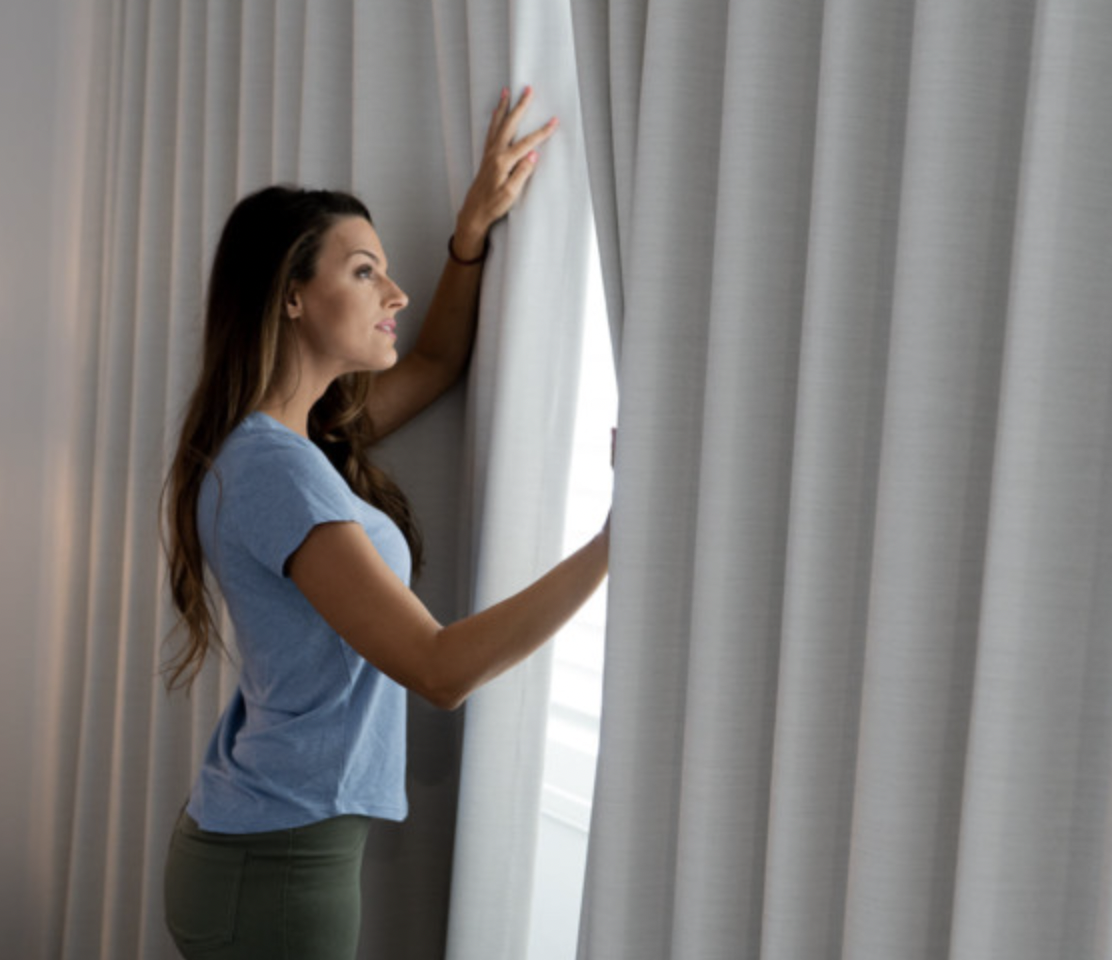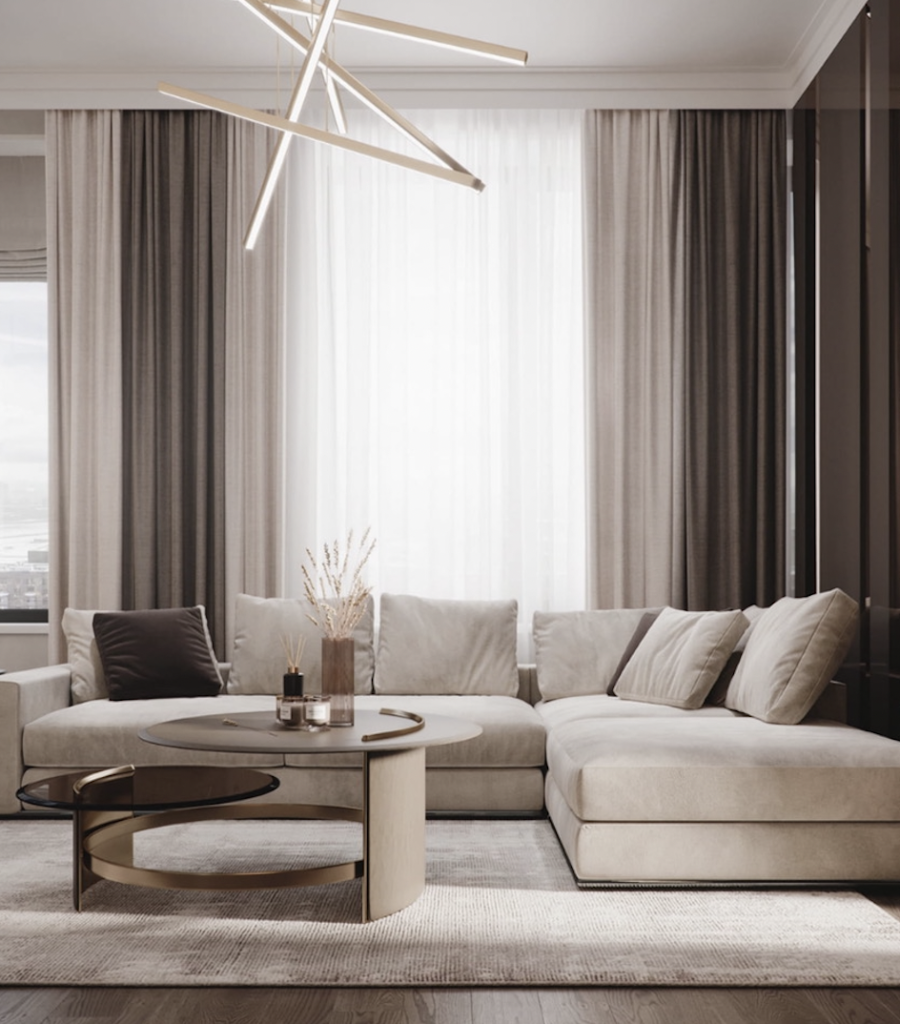
Curtains are as vital a part of a room’s look as the furniture, artwork, or the rug in it. Apart from their functional aspects, curtains bring their own character and aesthetic to your room’s décor. Due to the large amount of surface area of drapes and curtains, these actually set the tone of how your place looks.
When choosing your curtains, especially if you’ve opted for custom curtains, the first decision is to decide on the right kind of curtain fabric. There are wide-ranging curtain fabric choices available in the market. First, we take a brief look at the options and the benefits and shortcomings of each one. Then, we will move on to matching specific fabric types to your space needs.
Table of Contents
These are some of the most popular curtain fabrics:
1. Cotton
A natural and sturdy fabric, cotton has great fall and drape. Available in a wide range of thread counts (thicknesses), weaves, and prints, it is also available across price ranges to match different budgets. A big benefit of cotton as curtain material is that you can usually wash it at home. On the flip side, cotton needs heavy ironing to get the wrinkles out. Also, brighter colors are prone to fading under direct sunlight. Some cotton fabrics can also shrink post-wash.
2. Linen
Like cotton, linen is a natural fabric. Lightweight and airy, linen falls and drapes like a dream. When it comes to creating a casual yet elegant look, it is unmatched. Linen’s two relative drawbacks are its cost and maintenance. Linen is more expensive than cotton and it can show wrinkles if not ironed and hung right after washing. However, if you like your home to have more natural light, then linen is the best choice.
3. Polyester
This is a synthetic fabric available in a variety of colors and weight options. Its foremost benefit is its affordability. Then there is the easy availability of a huge variety of colors and prints. Polyester doesn’t fade easily. Any stains and spills can be washed off without much ado. Polyester curtains can also be home laundered in your washing machine. What goes against polyester is that it catches fire easily. Secondly, it lacks the high-end finesse and quality drape that velvets, silks, or linens give.
4. Velvet and suede
These are heavy fabrics with a lush feel. Both drape very well and look very elegant in vintage settings. Velvet and suede are also good insulators against cold, draughts, and noise. The downside is that these fabrics catch dust, need regular vacuuming or brushing, and are not suited for warm climates.
5. Silk
The ultimate in luxurious draperies, silk is the fabric of décor dreams. It falls and drapes fabulously, and colors glow like jewels in silk. Unfortunately, silk is expensive. It fades under direct sunlight. In damp areas, moths can get to it. Last but not the least; silk needs dry cleaning. You can’t home wash your silk drapes.
6. Blended fabrics
The wonder of modern mills is that different fibers can be blended to create fabrics with higher functionality and lower price points. Polyester with cotton, cotton with linen, silk with viscose, the options are endless.

Now that you know the fabrics and their good and not-so-good points, we take a look at choosing what works for you. Here are the points to remember when picking fabric for your curtains or custom roman shades:
1. How much light inflow does your space need
If you want natural light filtering in, opt for lightweight, see-through, loose weave fabrics like sheer cotton or linens or polyester blends. This is especially recommended for small spaces as light inflow opens up the space.
2. Is this a high traffic area, or a low traffic one
For a place with high footfall and frequent activity, choose a fabric that can be washed at home in your washing machine. Also, choose a darker color as light colors tend to show dirt and stains.
3. How much privacy do you need
If you need to block viewing from outside, go for a thick fabric that doesn’t billow with the breeze. It should be heavy enough to fall well and stay there. Thick cotton, heavy jacquard, velvet, and suede are some fabrics that will protect your privacy.
4. What’s your décor style
If your room is formal with a luxe look, it is better to opt for drapery fabrics like silk (lined) and velvet. You can also pick high-end blended fabrics such as jacquard weaves. If your space requires a casual vibe, go for linen, cotton, or polyester.
5. What’s your budget
If your budget is on the low side, polyester is your best bet. Above the polyester price point, you can look at blends and cotton. Then there are linens, velvets, and suedes. At the top is pure silk. Keep in mind your overall drapery budget, and choose accordingly.
6. How much maintenance you can undertake
Curtain fabrics like pure silk and velvet need to be dry cleaned (a recurring expense). Cotton and linen are typically home washable but need heavy ironing. Polyesters and several blends can easily be machine washed at home.
7. Do you need to insulate your space from cold and/or noise
For insulation, you need heavy blackout curtains made with densely woven fabrics. Velvet, suede, and heavy jacquards are the best choices for this.
How to check a fabric for your drapery needs?
Take a reasonably large piece of curtain fabric. Pleat it like an accordion and hold it in front of a window in the daytime. Now you can check its drape, fall, and light filtering/blocking ability. This will help you match the fabric with your curtain requirement.
Now that you know your options, choose the curtain fabric that works for your space.